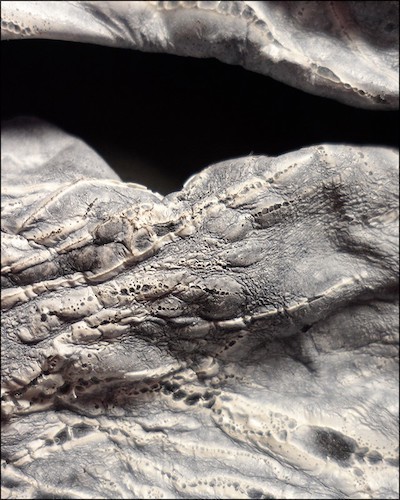Foundation Diploma in Art & Design Virtual Exhibition
Students from the last UAL Level 3 and 4 Foundation Diploma in Art and Design course share their final mixed-media projects. Mostly created during lockdown conditions, these diverse and innovative artworks are the culmination of two years' part time study.
Exhibition Profiles
Rachel Hughes - 'Tidal Play'
Found objects, collaboration, animation
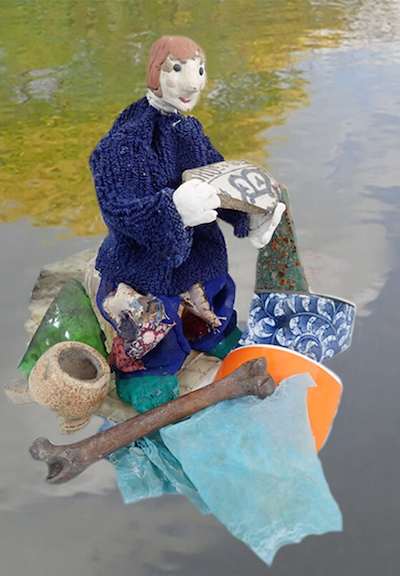
I live on the river Thames, which has been the inspiration for this project. Some of the ideas behind the project are: time, tides, nature, waste, pollution; cabinets of curiosity, generating conversation and play. I wanted to turn my exploration of the riverbed into something that was interactive, collaborative and playful – and a reflection of our complex relationship with our environment. See more of Rachel's work here.
Silvia Renard - 'Macro/Micro'
Mixed media: heat treated tyvek paper, lutradur fabric, printed images and acrylic paint
I wanted to combine scientific micro/macro images and experimented with printing, painting and heat distortion. My aim was to show the visual relation between both worlds. Images taken by scientists are combined with my own drawings and paintings. Do we all use the same mechanism to 'read' these kinds of pictures? What changes when we know the scale of the pictures? Can we be tricked by them? How does our brain work when dealing with these pictures? See more of Silvia's work here.
Angela McCullagh - 'Home Tools: Comfort and Charm'
Acrylic painting, textile and mixed media on paper
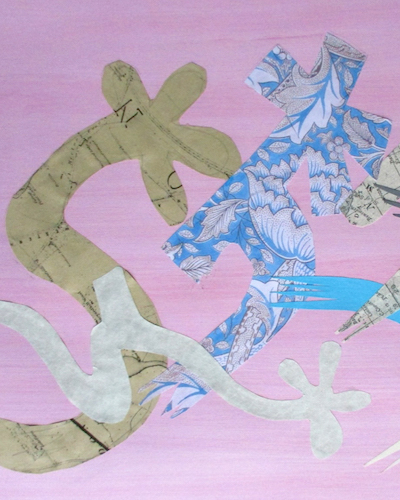
In my artwork I have sought a playful interpretation of various tools and utensils from my old family home where I spent lockdown. These ideas have been reflected in my material choices through the creation of object 'portraits' in mixed media: acrylic paint, collage and textile on paper. Influences include Henri Matisse and Philip Guston.
See more of Angela's work here.
Katherine Sarah Evans - 'Utopia, Dystopia'
Mixed media: paint and collage. Integration, Displacement, Craft, Monetary Value, Utopia, Dystopia
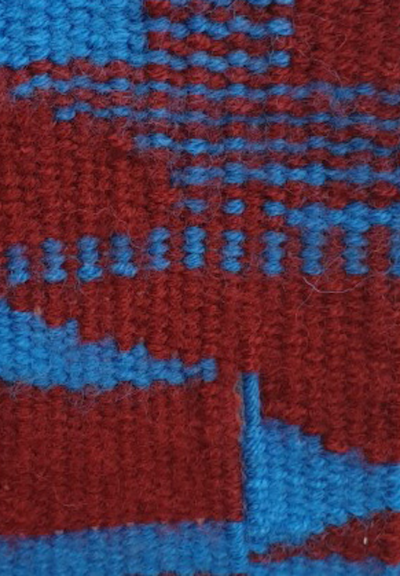
I have used my accountancy background to influence my ideas, both within this project and throughout the course. I explored William Morris’s utopian philosophy, artwork and anti-industrialisation beliefs to inform this piece. See more of Katherine's work here.
Joanna Greatwich - 'The Fight'
Mixed media: collaged stitched and burnt calico, hand-dyed polyester and paper images on board
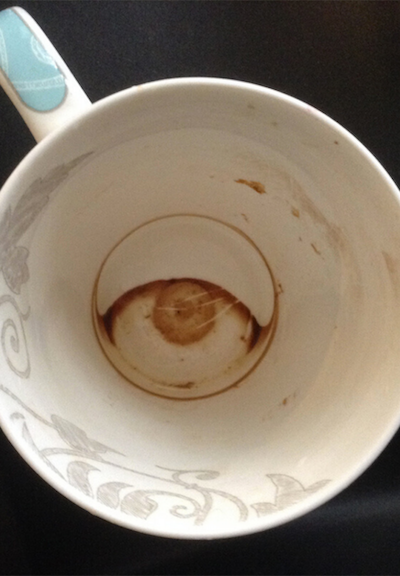
Recurring themes in my work are climate change/the natural world in relation to human beings, capitalism, and power. This project grew from a desire to use a natural material, then to manipulate and overlaask some questions: Have we forgotten what utopia we started with? Where, really, do we think our ongoing fight with nature will lead us? See more of Joanna's work here.
The Foundation Diploma at RHACC - Recollections and History

This Year’s Foundation Course by Kirsty Brooks
As the last tutor, I wanted to pay homage to the experimental, life-changing course that has had a home at RHACC for the last twenty-six years and been my occasional job for the last ten. We gathered recollections and thoughts (below) from a number of our long-standing past tutors who all made the course relevant, vibrant and challenging for the hundreds of students who have passed through the doors of RHACC.
I took over the part-time evening course in January this year and together with the students, we were forced to learn new ways of making with limited resources and equipment, changing plans every few weeks along with the situation and assessment requirements. Our students have adapted to the situation with focus and determination and produced accomplished and thoughtful work from a range of home environments, working with what they could access, what I could post them or photograph and what they had time to evolve whilst coping with other complex home, professional and work commitments. We maintained weekly contact with tutorials and screen-sharing activities via Zoom and supported each other from our various locations and work spaces.
Creating an online exhibition without a physical one encouraged thoughts of spreading our work to a wider audience and discussions on how to mimic or evolve the experience of getting up close to an artwork. Now, we have finished, we present you with the last in a long line of brilliant Foundation Diploma exhibitions. This year’s students leave without knowing how their future learning will look but with increased resilience and supreme powers of adaptability and focus.
A History of The Foundation Course at RHACC by Richard Beard
The BTEC Foundation Diploma in Art & Design course started in September 1994 and I joined RHACC as course leader to run the full time course. We started with 30 students and it was five days and two evenings a week, 37 hours contact time. It was the first full time course at RACC, which was run still run by Richmond Upon Thames Borough Council. The course was based in the newly converted upstairs studio at the Shaftesbury Centre. My office was a disused darkroom off the main studio full of enlargers with no electrics and boarded up windows.
I soon realised there was an opportunity to also run a part-time two year Foundation course which started the following year in September 1995. It ran two days a week alongside the full time mode with some combined workshops.
Shaftesbury was an amazing centre as it was a real Art & Design community and had a very creative vibe. The Foundation had some fantastic social events at Shaftesbury and a chance for the full time and part time students to be together.
The course went on some fantastic study tours and really added another dimension to the students’ studies. We saw some memorable exhibitions and the trips were very influential resulting in some accomplished work. It was a chance for students to immerse themselves in another culture and also for the full time and part time students to get to know each other. Destinations included: Barcelona, Madrid, Paris, Berlin, Amsterdam and Rome. Barcelona was the most popular destination and one year we got a coach. It took 24 hours. We opted to fly after that.
In 1999 the course moved to Parkshot to the newly converted roof studios and had access to a Mac suite, which was a real game changer allowing for greater exploration of digital media. The Shaftesbury studios were taken over by the HNC Fine Art. The HNC became a popular progression route for many part-time day students. The courses later moved to Clifden and eventually back to Parkshot again just before RACC merged with Hillcroft and became RHACC.
The part-time evening mode was established around 2002. It was a unique two-year course taught one evening a week and four Saturdays per term. Saturdays were divided between particle work and Contextual Studies. The nature of the part-time course modes enabled students with other commitments to be able to study and gain an arts school experience. For this reason we started the HNC/D to enable some to continue studying after Foundation.
At its height the Foundation had around 70 students: 20 full time, 25 on the part time day and 25 on the part time evening mode. It was a bit of a conundrum to accommodate everyone especially the full time and part time day students in fairly small studios. We had to take over the print room at Shaftesbury two days a week so there was lots of printmaking for a few years.
The full-time and part-time day course applications started to diminish when the Access course became a more established qualification across the College and also when Kingston College opened a Foundation course. The full-time course initially closed around 2006 and the part time day carried on in various forms until around 2011. I went part-time for a while so Jera May took over the running of Foundation from 2009 and the full time course was resurrected again. The evening mode was still going and Annie Davey ran this a few years. I started looking after full time Foundation when we changed to the UAL qualification around 2012. The full time Foundation was taught together with Access in its final year in 2014/15. The part time evening mode was reestablished again in 2014.
Fantastic tutors taught on the course and helped enrich the students’ experience. We always tried to use practicing artists and designers wherever possible to give the students an insight into the professional life of practitioners.
The Foundation course at RACC/RHACC changed and enriched many students’ lives and gave opportunities to adults who would not have been able to study at traditional mainstream colleges. Students from RHACC gained degree places at top art schools and many went on to postgraduates at the Slade and the Royal College of Art.
Thoughts on The Foundation Course by Jera May
Since having the privilege to teach on or manage Foundation Art & Design at Richmond Art School I have witnessed many times the long-lasting impact the foundation journey has on adult students’ lives. Where learners have challenged their preconceptions and developed as people in new and interesting ways with a confidence and curiosity for a creative life. Many have embarked successfully on completely new careers to become the architects, graphic designers, self-employed artists/craftists, art teachers, freelance photographers, and creatives that they always wanted to be.
Foundation is the fundamental course for any art school; with its routes in the Bauhaus it has changed our world and how we perceive it. It is an extremely valuable course for learners, offering long-term life changing experiences both in terms of careers and critical thinking thus changing perspectives. It also enables all learners from a range of backgrounds to access high quality rigorous education through the advanced learner loan.
Recollections of The Evening Foundation Course by Annie Davey
I worked on the part time foundation course between 2005 and 2011, and have fond memories of those Thursday evenings that would kick off at 6pm as the college shifted into evening mode. As a tutor also teaching during the day I was often exhausted, as were the students who would arrive knackered from work with massive bags of materials and coffees in hand. And yet over the course of three hours the group would become focused and animated, in my case leading to many missed trains home.
The evening foundation encapsulated the best of a long tradition of UK adult education; affordable and welcoming those returning to study after having had families or been consumed by full time jobs, as well as long term RACC students who felt ready to take their work to a new level. Despite the initial struggles with confidence typical of adults returning to education, the diverse life experiences of these students would soon animate discussions about art and design and the course would rekindle an engagement with art making, and creative identities, that had often long been sidelined.
The course would commence with workshops centered around disciplines – technical drawing, 3d construction or digital media - that were sometimes staged as strange and memorable events; it wasn’t uncommon to find tutors arriving early to drape reams of kitchen roll over precarious washing lines or carefully install cardboard towers with theatrical lighting from which students would work. As the course progressed toward the final major project it became highly student-centered, manifest in a studio in which one student might be producing a textile installation, another typographies for the local high street and another a series of large scale drawings…work that would be packed back into lockers and drawers at the end of the night but would often leave residues for the next day’s class.
VIEW OUR FULL RANGE OF CREATIVE COURSES

